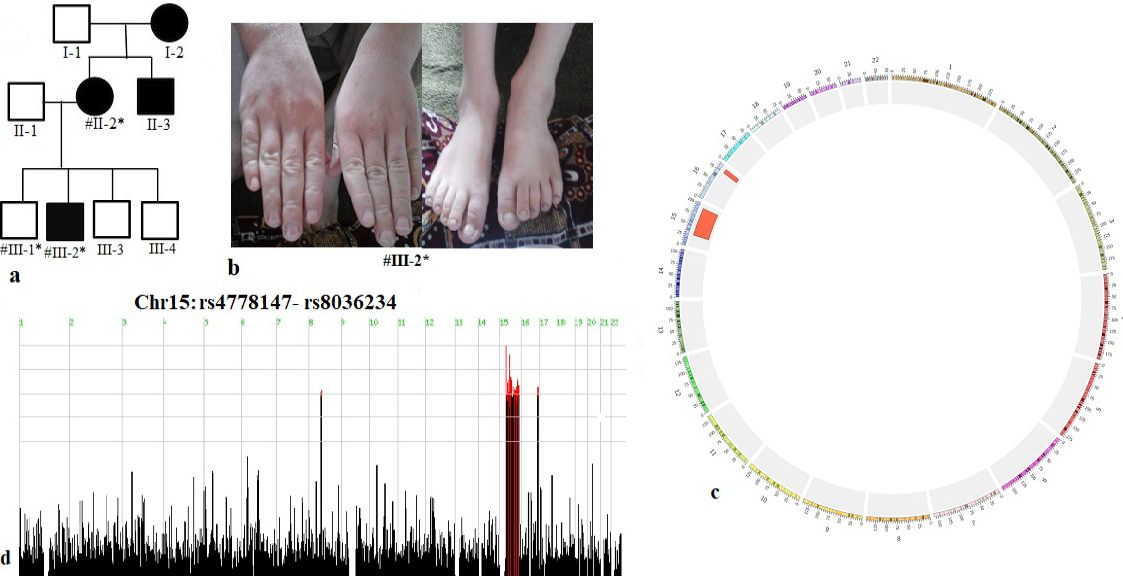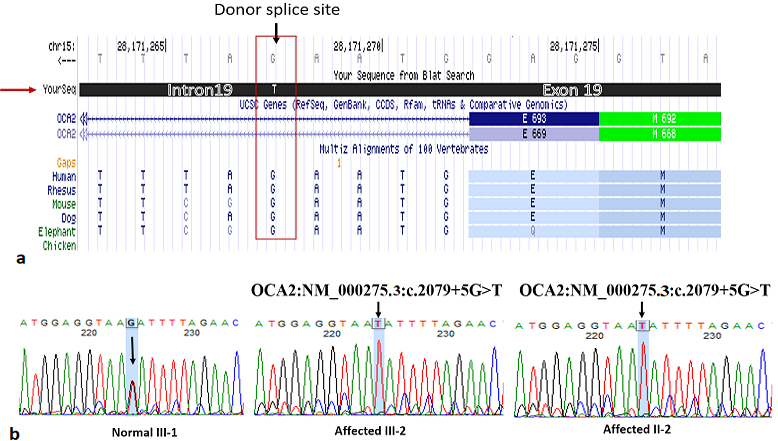Mutation Analysis of a Pakistani Oculocutaneous Albinism Family Identifies a Novel Splice Site Defect in OCA2 Gene
Mutation Analysis of a Pakistani Oculocutaneous Albinism Family Identifies a Novel Splice Site Defect in OCA2 Gene
Hadia Gul1, Abdul Haleem Shah1, Ricardo Harripaul2, Anna Mikhailov2, Ejaz Ullah Khan3, Wasim Shah3, Nisar Ahmad3, John B Vincent2,4 and Muzammil Ahmad Khan3*
a) Family’s pedigree showing autosomal dominance, having total of four affected individuals in all generations. b) Picture of affected albino individual reveals the hypopigmentation of skin. c) FSuite HBD map of family indicating HBD region at chromosomes 15. d) HomozygosityMapper’s image showing analyzed result of SNP genotyping of family depicts HBD region at chromosome 15.
Family’s affected individual’s sequence in UCSC genome browser depicts substitution of G with T and G is conserved in each species at position 2079+5. B) Sequence chromatograms of affected and normal individuals of family reveals the homozygous substitution of G nucleotide with T at position 2079+5 while the normal sibling was heterozygous at this position.











